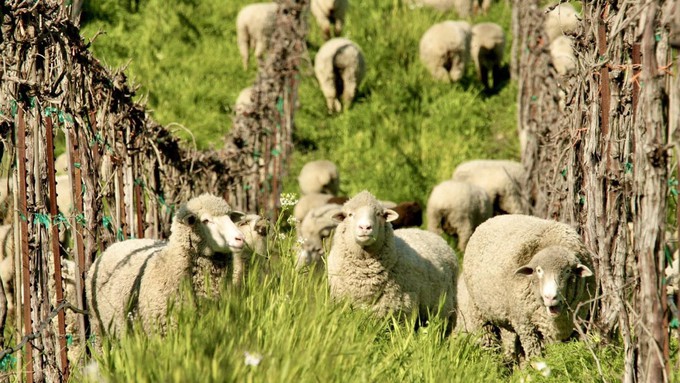
Sacramento Speakers Series supports scholarships for future farmers and more

Matchbook Wine Co. uses sheep as natural weed-eaters between its vines. Hear Lane Giguiere, owner of the Yolo winery, and other woman in agriculture talk about their work. Courtesy Matchbook Wine Co.
What local gardener hasn’t daydreamed about farming? But what does it take to be a sustainable farmer in the Farm-to-Fork Capital?
How do you grow wine with less waste? What about raising happy cows in healthy pastures? Where can you study to be a sustainable farmer and get some hands-on practice?
Find out at this special event – “Women in Agriculture: Celebrating Sustainable Production.” Set for 5:30 p.m. Wednesday, Feb. 21, this scholarship fundraiser will be held at the Event Center by Bella Bru at the Milagro Centre, 6241 Fair Oaks Blvd., Carmichael.
Tickets are $50 in advance via Eventbrite, $60 at the door. Admission includes one drink coupon and appetizers.
Proceeds from the event will go toward scholarships and grants for women interested in careers in agriculture or the food and beverage industry. The evening is hosted by the Sacramento Chapter of Les Dames d’Escoffier.
As part of the Les Dames’ Sacramento Speakers Series, an expert panel will share “insights on the people, principles, programs and practices that contribute to a sustainable food system.”
The panel includes: Lane Giguiere, owner of Matchbook Wine Co. in Yolo County; Mary Kimball, CEO of Center for Land-Based Learning; and Karen Stone, manager of Yolo Land and Cattle Co. Food expert, author and nutritionist Amy Myrdal Miller will serve as moderator.
This panel also has lessons that can apply to backyard farmers. Sustainable agriculture protects the environment while working with the land. These methods promote natural resources and help wildlife, too.
It’s sure to be a thoughtful and interesting evening, dedicated to the future of local agriculture. Tickets are available at Eventbrite (https://bit.ly/3O5i9vh).
Comments
0 comments have been posted.Sacramento Digs Gardening to your inbox.
Food in My Back Yard Series
April 1: Don't be fooled by these garden myths
March 25: Fertilizer tips: How to 'feed' your vegetables for healthy growth
March 18: Time to give vegetable seedlings some more space
March 11: Ways to win the fight against weeds
March 4: Potatoes from the garden
Feb. 25: Plant a fruit tree now -- for later
Feb. 18: How to squeeze more food into less space
Feb. 11: When to plant? Consider staggering your transplants
Feb. 4: Starting in seed starting
Sites We Like
Garden Checklist for week of March 30
Your garden doesn’t mind April showers. Get busy now to enjoy those future flowers.
* Get ready to swing into action in the vegetable garden. As nights warm up over 50 degrees, start setting out tomato, pepper and eggplant transplants.
* From seed, plant beans, beets, cantaloupes, carrots, corn, cucumbers, melons, pumpkins, radishes and squash. (Soak beet seeds overnight in water for better germination,)
* Plant onion sets.
* In the flower garden, plant seeds for asters, cosmos, celosia, marigolds, salvia, sunflowers and zinnias.
* Transplant petunias, zinnias, geraniums and other summer bloomers.
* Plant perennials and dahlia tubers for summer bloom.
* Transplant lettuce and cabbage seedlings.
* April is the last chance to plant citrus trees such as dwarf orange, lemon and kumquat. These trees also look good in landscaping and provide fresh fruit in winter.
* Smell orange blossoms? Feed citrus trees with a low dose of balanced fertilizer (such as 10-10-10) during bloom to help set fruit. Keep an eye out for ants.
* Apply slow-release fertilizer to the lawn.